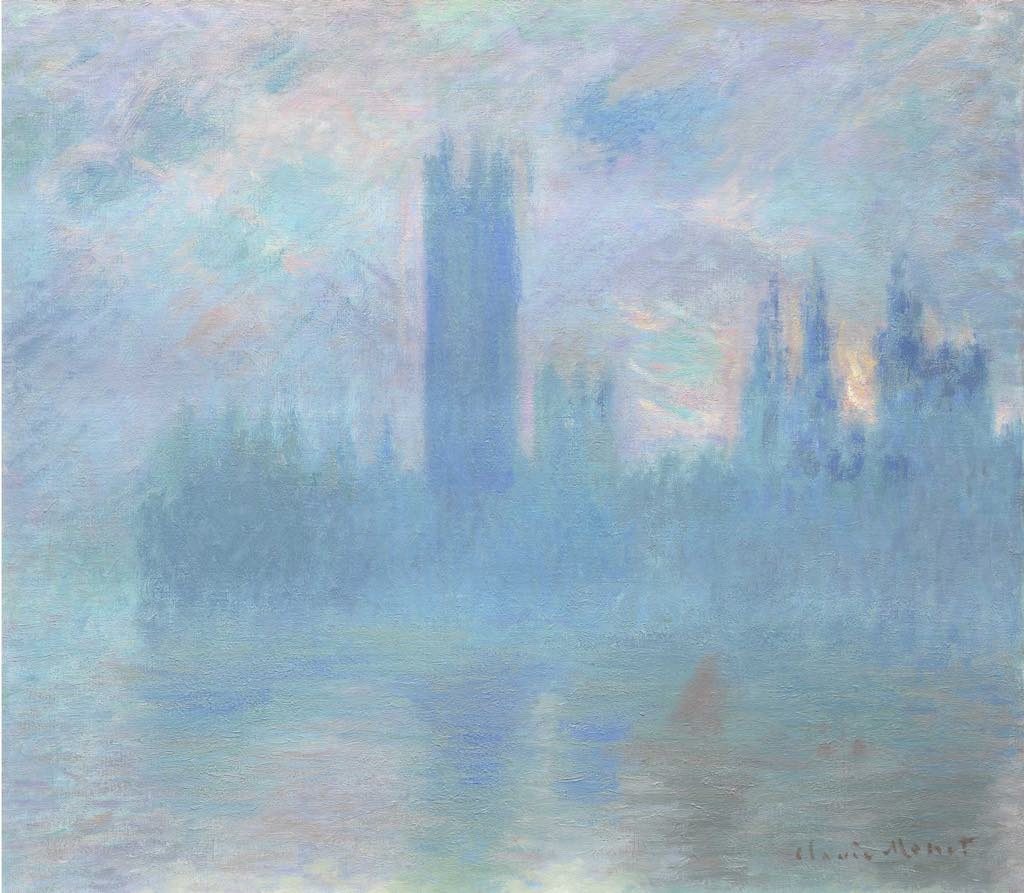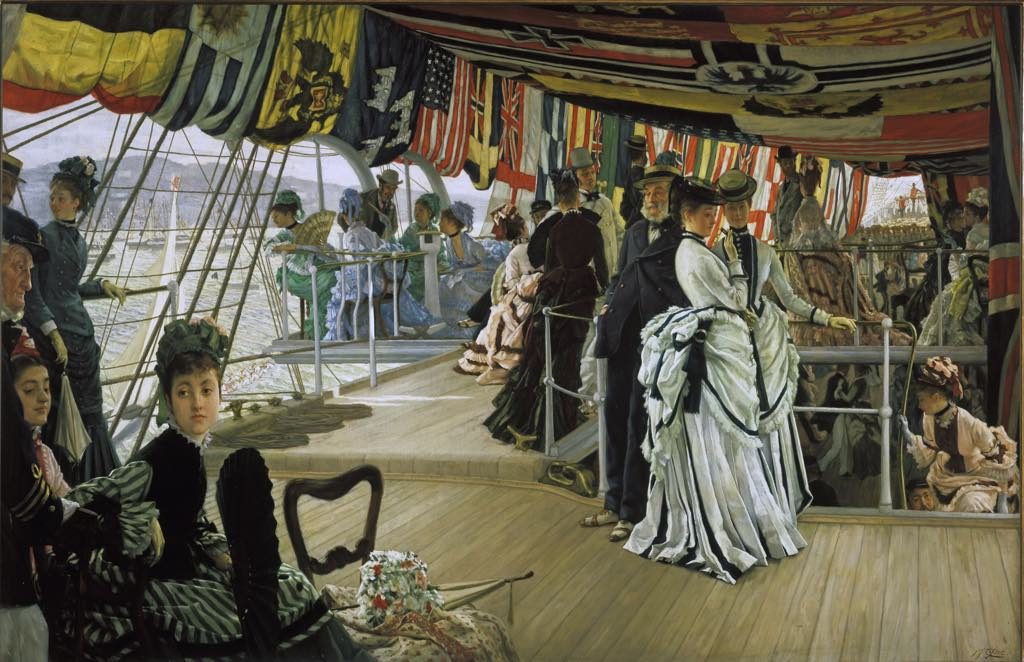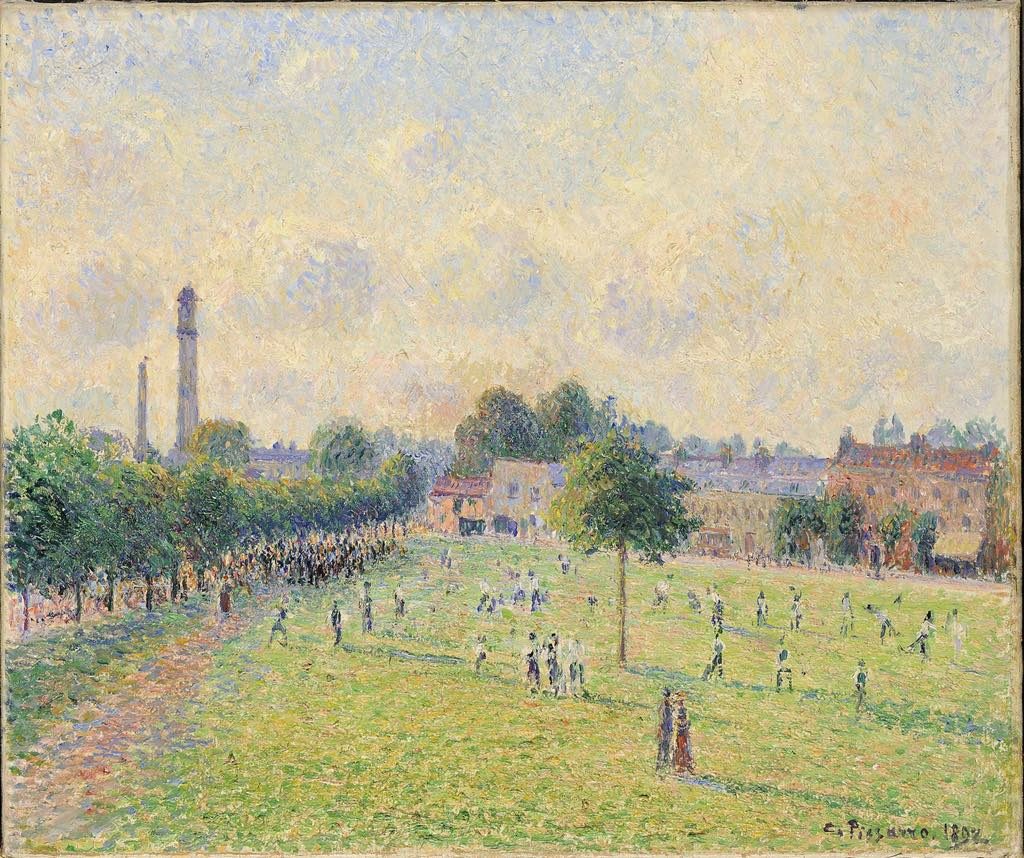Don’t be surprised, as I was, if you don’t see any Impressionist paintings until the very end of the exhibition “Impressionists in London.” The title is misleading – it would more accurate to use its subtitle, “French Artists in Exile, 1870-1904,” but certainly Impressionists sell more tickets. No matter, it is still an extremely interesting exhibition that is worth seeing.
The show starts out as a sort of illustrated history lesson, setting the stage for the departure of many French painters and other nationals for London to escape the horrors of the four-month Siege of Paris during the Franco-Prussian War (July 1870-January 1871), during which starving Parisians were forced to eat pets, rats, and zoo animals, and the uprising that followed it as the city of Paris set up a left-wing government known as the Commune, which was soon viciously crushed by the national government (not the first or last time Paris has been at odds with the French government) in a bloody massacre of some 20,000 of the Parisian upstarts. Many of the city’s monuments, including the Tuileries Palace and the Hôtel de Ville, were destroyed by the war or by the rebellious Communards.
These events forced many artists and others (including deposed Emperor Napoleon III and his wife Eugénie) to flee to London, both to find safety and to try and earn a living, which had become just about impossible in Paris. One of them, James (né Jacques-Joseph) Tissot, figures large in the exhibition, since he stayed in Paris during the war, fighting to defend the city from the Prussians, and later joined the Communards, all the while sketching the scenes of horror he witnessed, including the execution of Communards by the government in the Bois du Boulogne on May 29, 1871. His watercolor “The Wounded Soldier” (c. 1870) is particularly affecting, showing the handsome young man slumped against a wall (probably in the Comédie Française, which was used as a hospital during the siege).
Among other artists who stuck around and recorded the events of “the terrible year” was Gustave Doré, represented here by several works, including a grim winter’s night scene in which a nun carries a rescued child while Paris burns in the background.
One oddity in this section is Jean-Baptiste Corot’s premonitory painting “The Dream: Paris Burning” (1870), painted before the Prussians arrived in Paris, depicting a nightmare he’d had the night before of Paris in flames, a statue of Marianne, the national symbol, still standing in the center as the exterminating angel flies overhead.
Tissot pops up in the London section of the show in much happier circumstances: he thrived in London, where he anglicized his first name, and became a popular society artist, painting colorful scenes that gently mocked English social customs, including the wonderful “Too Early” (1873), which depicts the consternation caused by the early arrival at a ball of lavishly dressed guests.
The artist Alphonse Legros, who helped many of his compatriots find their way in London, plays an important role in the show, as does the sculptor Jules Dalou, represented by a number of his lifelike terracotta statues.
Finally, we come to the Impressionists, with views of London by Camille Pissarro, Alfred Sisley (who was British, but lived most of his life in France), and Claude Monet, with his famous series depicting the Houses of Parliament in different weather conditions and at different times of day. These were actually painted not while he was an exile in London but over 30 years later during a visit to the city.


Other anomalies in the show include three of James Abbott McNeill Whistler’s “nocturnes,” mysterious and beautiful night views of the Thames, and André Derain’s Fauvist response to Monet’s Parliament paintings, made only a few years after the former.
The curators may have taken liberties with their theme, but this is still a fascinating and educational show. I recommend it.
Favorite



I thought that this was one of the most badly curated exhibitions I have seen in a long while. Its central idea that French painters brought Impressionism and its liberating effects to London when they headed into exile is not only left unproven by the show’s contents, but actively disproved by them. The curators’ choices of generally mediocre paintings actually reveal that when French artists got to London, they became not freed, but instead hideously bogged down in the pseudo-realism of the Victorian pre-Raphaelites (see Tissot’s monstrous ship deck above). The only real reason to see the exhibition is the extremely touching portrait of Jules Dalou, his wife and daughter – which, in keeping with the exhibition’s overall muddle, was painted by Lawrence Alma-Tadema, who was Dutch.